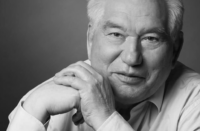This November, tens of millions of working people around the world will celebrate the centenary of the Russian Revolution, which took place on 7 November 1917 (or 25 October according to the Julian calendar, then used in Russia).
To understand how the revolution happened we need to place it in a clear historical context: the role of the mass of workers and peasants, the inter-imperialist First World War, and the barbarism inflicted on millions of workers who fought in that imperialist conflict and in particular the huge effect it had on the Russian empire.
We first need to go back to 1905 and the revolt of workers in St Petersburg and Moscow and other Russian cities.
In 1904 and 1905 the Russian empire was at war with the Japanese empire. As workers and peasants revolted against their conditions, strikes broke out throughout the Russian empire, involving up to half a million workers. The first workers’ soviets (soviet is the Russian word for council) sprang up in factories, in May 1905. This was followed in July and August by the establishment of a Peasants’ Union.
Also in 1905, open opposition, with the formation of soldiers’ and sailors’ soviets, began to manifest itself within the army and navy. In June 1905 the sailors on the battle cruiser Potëmkin revolted against their officers. By October 1905 more than 2 million workers were on strike throughout Russia, and workers’ soviets were established in many factories and cities. More than fifty peasants’ soviets had also been established.
The struggles of 1905, though defeated, provided an example and a lesson for the working class, as a kind of rehearsal for the revolution of 1917.
Russia was the heart of the Tsarist empire, which stretched from Poland to Central Asia and as far as the Pacific Ocean, as well as being its largest and most economically important part. The population of the Russian empire in 1905 was approximately 125 million, with Russians accounting for 56 million of these. This empire was dominated by a feudal landlord class, with an emerging and important capitalist class.
The Russian Social Democratic Labour Party, based on Marxism, had been founded in 1898 in Minsk. After its 1903 congress two factions emerged: the revolutionary Bolsheviks (meaning majority) and the reformist Mensheviks (minority).
Lenin was to become one of the foremost leaders in the organisation of the international workers’ movement. He championed revolutionary transformation, as against the strong reformist current within the workers’ movement.
At the Basel conference of the Socialist International in 1912 the socialist parties of Europe agreed to oppose the coming inter-imperialist war. Lenin, among others, argued that workers’ parties should not side with their own ruling class but rather turn the war in Europe into a civil war, with the overthrow of emperors, kings and queens and the industrial capitalist class. This was a view shared by James Connolly and the Socialist Party of Ireland, and was one of the reasons why Connolly pushed for a rising in Ireland against the British empire.
With the outbreak of war the International split when major socialist parties, especially the German party, broke the commitments made at Basel, backing their own ruling class. In Russia the Bolshevik Party kept to its commitment, as did James Connolly and the Irish Citizen Army in Ireland.
The outbreak of the inter-imperialist war and the wanton and savage slaughter it entailed had a profound impact on the peoples of Europe and particularly of Russia. The Russian army was made up mainly of peasant soldiers. The slaughter on the Russian front sent shock waves deep into the heart of the Russian peasantry, further weakening Tsarism’s political base and strengthening the growing unity between the working class and the peasants.
We are used to being told that history is made by great leaders and generals, rather than by the actions of the people. The Russian Revolution turns this fable on its head. It was the actions of the millions of Russian workers and peasants that created the decisive revolutionary conditions, combined with the strategic political leadership given by the Bolsheviks, led by Lenin. The people wanted and demanded change; the Bolsheviks provided the political and strategic leadership. They gave direction to the working class, peasants, and soldiers.
In 1917 there were two revolutions in Russia. The first one, in February, led to the overthrow of the Tsarist autocracy and the establishment of a government dominated by the Russian bourgeoisie under Alexander Kerensky. His government declared that it was in favour of social and economic reform and had the ending of the war as its goal; but these were promises that it was never capable of fulfilling.
The months between February and October became known as the period of dual power, with the Russian state and government on one side and the Workers’, Peasants’ and Soldiers’ Soviets, with the support of the masses, on the other. Within the Soviets the Bolshevik Party rapidly gained support, becoming a majority by October.
It was in this revolutionary period that Lenin published his “April Theses” in the Bolshevik newspaper Pravda (truth) of 7 April. They captured the mood and the experience of the working class and poor peasants and inspired the struggles and sacrifices that broke the back of the Kerensky government, culminating in the October Revolution.
Lenin outlined the strategy that should be developed in order to push the revolutionary process forward and consolidate the gains and advances already achieved. The Theses laid out the core strategic positions for meeting the situation facing the people and helped to refocus the Bolshevik party. They reaffirmed the following policies:
• That the Great War was an inter-imperialist war, and the working class should have nothing to do with it.
• That there should be no support for the Provisional Government.
• That the February Revolution was only the first phase, and that workers and peasants needed to push forward to see the transfer of power from the bourgeoisie to the Workers’ and Peasants’ Soviets.
• That the Bolshevik party needed to engage more deeply with the mass of the people, to argue that “the entire state power” must rest with the soviets.
• That they must counter the influence of those forces that would make the soviets subservient to the will of the Provisional Government; through this struggle the workers would learn and gain experience, would steel themselves in struggle.
• Based on their own experiences from 1905 onwards, that the people’s demands could be fulfilled only by the soviets (this was what Connolly called a workers’ republic).
• That the instruments of state repression, such as the police and army, as well as the state bureaucracy, had to be done away with.
The April Theses also put forward crucial economic demands that had the potential to rally workers and peasants—demands that would put economic and political power into the hands of the working class and peasantry. These demands included:
• The nationalisation of all banks and the establishment of one bank under the control the Workers’ and Peasants’ Soviet—i.e. a worker-controlled state bank.
• The break-up of the big landed estates, and all land to become public property, which would be disposed of under the control and direction of the local Soviets of Agricultural Labourers’ and Peasants’ Deputies.
• All distribution of products to be under the control of the Soviets.
The Theses also dealt with two additional pressing problems. Firstly, they called for the holding of a party congress, to update its political programme and to sharpen and deepen its ideological development as well as to strengthen party discipline.
Secondly, Lenin called for the establishment of a new workers’ international to combat social-chauvinism, reformism, and opportunism, which were dominant features of the heavily compromised Second International. This new Third International—the Communist International—was established in 1919.
In July 1917 the Bolsheviks raised the slogan “Peace, bread, land,” which immediately found a response with the masses of the Russian people and in particular with the Russian soldiers fighting on the front.
By October, power had decisively shifted from the old ruling-class forces, which could no longer continue to rule in the old way, to the new class forces expressed in the alliance of workers and poor peasants, who were no longer prepared to be ruled in the old way.
The Bolshevik revolution triumphed on 25 October 1917 (7 November according to the modern calendar). Working-class state power, in alliance with the peasantry, was established.
On the night of 24 October in Petrograd (St Petersburg), Red Guards, along with armed factory workers and sailors from the Baltic Fleet, seized the banks, railway stations, telegraph office, and power stations. They captured the Winter Palace, the political base of the Provisional Government. Kerensky fled, the remainder of his government was arrested, and the palace was secured.
Power had moved swiftly from the Russian ruling class to the working class and peasants, with the Bolsheviks playing a leading political, ideological and organisational role.
In its first act after the triumph of the revolution the Soviet of Workers’ and Peasants’ Deputies adopted a number of decrees. One of the first was the Decree on Peace, which stated the new revolutionary government’s position regarding the Great War. It outlined measures for Russia’s withdrawal and an immediate end to the war, “without the payment of indemnities, or annexations.”
The second major decree was the Decree on Land. It described measures for transferring and dividing rural land among those who worked it. It allowed for the forcible breaking up of many wealthy estates by peasant forces, fulfilling one of the central demands of the April Theses.
The Workers’ Decrees established for the first time a minimum wage and limits on working hours and allowed for the taking over and running of factories by elected workers’ committees.
The Russian Revolution liberated the various non-Russian nationalities from the colonial yoke and gave them control as autonomous socialist republics within the union. This was a precursor of the law adopted in 1922 that established the Union of Soviet Socialist Republics.
The establishment of workers’ state power laid the foundation for what was to follow in a few short years:
• The destruction of landlordism as a rural economic system, giving poor peasants and agricultural workers a stake in the collectivised farms and co-operatives.
• A free health service for all citizens, in a society in which tens of millions of people had been denied access to even rudimentary medical services.
• A guarantee of equal rights for women, including the vote, together with equal wages, maternity benefits, and the right to divorce.
• Employment for all and the eradication of unemployment; by 1936 all employment exchanges were closed as full employment was achieved.
• The establishment of universal free education at all levels.
• The elimination of illiteracy within ten years of the end of the civil war.
• Cultural resources made available to the people, with an explosion in theatre and cinema, once the preserve of the rich.
The support given by the Soviet Union added great impetus, in some cases decisive, to the national liberation struggles of the twentieth century. It was the Soviet Union that broke the back of fascism and was the main force for world peace from its very beginning.
The Russian Revolution led to a surge in revolutionary and progressive movements around the world. Communist parties were established in many countries (including Ireland) along the lines of the Bolshevik Party. Workers’ resistance grew, and revolutions erupted in a number of European countries—all of which were defeated. Here in Ireland the Russian Revolution inspired thousands of workers to take to the streets in support of the Bolsheviks. Workers established soviets in a number of towns and rural communities.
The Russian Revolution sent shock waves into the heart of the ruling class around the world. Fifteen countries (Australia, Britain, British India, British South Africa, Canada, China, Czechoslovakia, France, Greece, Italy, Japan, Poland, Romania, Serbia, and the United States) invaded Soviet Russia in support of the counter-revolutionaries during the civil war that erupted as the old ruling class attempted to roll back the tide of history. Their intervention prolonged the war until 1920, causing enormous social and economic damage and creating great and enduring difficulties for the construction of socialism.
The lessons of the Russian Revolution are many. We cannot simply replicate history or historical events; but what is certain is that only the working class can be the decisive force in ending exploitation, that revolution requires the active participation of a class-conscious working class, and that neither the overthrow of the capitalist and imperialist system nor the building of a new society is achieved spontaneously but is the product of conscious thought and action.
History is made by the conscious actions of the masses. For this, workers need their own political programme, and a revolutionary workers’ party.





